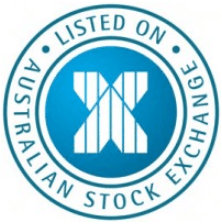Stan Shamu for Chris Weston, Chief Market Strategist at IG Markets
Asia has managed to edge higher despite limited leads from overnight trade, with the US closed and Europe mostly sidelined. The Nikkei has taken off in Asian trade in a move triggered by a USD/JPY breakout. USD/JPY traded through August highs and seems to be heading towards January highs. The pair topped out at 105.44 in January and traders are likely to be eyeing this level in the near term.
This move in USD/JPY seems to have triggered greenback strength across the board as risk currencies are also losing ground to the USD. With USD/JPY pushing higher, the Nikkei is within reach of its July highs.
Heading into the BoJ meeting, which commences tomorrow, it seems the general strategy is buying dips in the Nikkei and USD/JPY. There has also been plenty of talk around a pickup in demand for Nikkei short-dated calls. This might have been a key driver of the price action, given the significant outperformance of the index today.
On the economic front, it has actually been a quiet day, but perhaps the labour cash earnings reading out of Japan helped alleviate some of the fears around the economy. The reading showed 2.6% growth in July, while the market was only expecting +0.9% – this will help feed into the BoJ’s theory that inflation will rebound into the end of the year.
(USD/JPY since 2007 highs)
RBA remains on hold
While Japan has stood out, Australia has also seen some activity with a few releases hitting the wires. Building approvals came in at a better-than-expected +2.5%, while the current account deficit was relatively in line with estimates at $13.7 billion.
Heading into the GDP reading, the dampener is the fact this reading won’t do tomorrow’s release any favours – some analysts are actually tipping a disappointment to the forecast +0.4%. The pick-up in building approvals can perhaps be attributed to residential construction, which is likely a function of lower rates encouraging borrowers.
As expected, the RBA left rates unchanged but there were some changes to the language. While the ‘period of stability in rates’ line was maintained, there was acknowledgement of the signs of improvement in business conditions and household sentiment.
However, this was balanced out by a high unemployment rate and a relatively high exchange rate. Overall, a fairly balanced statement, but acknowledgment of property-related challenges in China suggest it is a situation they are monitoring closely. China directly impacts demand for some of the commodities important to Australia and therefore developments there are always key.
As far as the AUD is concerned, we are seeing modest weakness with AUD/USD dropping below 0.9300. However, it’s hard to be overly bearish on the pair, given the international community continues to chase the AUD for yield. The ASX 200 has managed to gain some ground though on the back of the statement and AUD weakness.
Euro remains fragile
Looking ahead to the European open, we are calling the major bourses mildly firmer. We have continued to see weakness in the single currency and it seems traders remain nervous as EUR/USD approaches the 1.3100 mark. While most signs point to further weakness in the pair, it seems there is a risk of a short-term bounce, given the pair appears oversold at the moment.
Additionally, a bit of caution is perhaps warranted heading into the ECB meeting . The European calendar is very light today but there is some activity on the UK and US front. In the UK we have construction PMI whilst US trade brings manufacturing PMI, construction spending and manufacturing prices.
